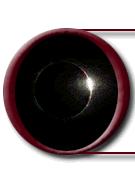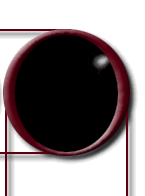


|
Note -- you have reached the original astrophotographs.com website. Thanks very much for visiting. Logo contact information has been updated (i.e. we moved to Taos, NM) as below: Willis Greiner You may also want to visit Willis' new astronomy site at: taosastronomer.com/ Welcome to
"Under the Night Sky", Willis
Greiner's astrophotographs.com "Under the Night Sky" 4th edition
Hello! Welcome to the 4th edition of astrophotographs.com newsletter! I hope you all are prepared for Christmas -- those of you in North America will be treated to a wonderful gift -- a partial eclipse of the Sun. As noted in the December issue of Sky and Telescope Magazine:
"Christmas will be extra special this year. Weather permitting, people all across North America will be able to watch the Moon glide across the low December Sun, creating a partial solar eclipse. This event will be visible throughout nearly all the inhabited parts of North America (except Alaska and the Yukon), as well as from most of Mexico and the Caribbean. According to Sky & Telescope Magazine, the eclipse takes place during early morning in the Southwest and mountain states, during late morning or midday in the central part of the continent, and during early afternoon in the East. People in the northwestern U.S. and western Canada will need to be up bright and early Christmas morning; the partial eclipse will already be in progress when the Sun rises, a most dramatic sight. How deep the eclipse will get also depends on where you are. As seen from California, Mexico, and the Caribbean, the Sun will appear only slightly dented at most. The eclipse will grow deeper, with the Sun turning into a fat crescent, for the Northwest through the central states to the Southeast. The narrowest, most dramatic crescent Sun awaits Christmas skywatchers in the Upper Midwest, the Great Lakes region, the Northeast, and all of eastern Canada. Here the light may be dimmed enough to give the winter landscape a slightly eerie cast, and winds may whip up as the partial loss of sunlight adds to the December chill."
The link to this informative article and another primer on eclipses will be noted below. Please click on them for extensive "coverage" of this event. Of course, YOU MUST NEVER LOOK DIRECTLY AT THE SUN, ECLIPSE OR NOT. The way to see this eclipse is by using the pinhole projection method, which is discussed in the Sky and Telescope article. Reviewing, push a small and clean pinhole (NOT a large hole) into a piece of light blocking thick cardboard or whatever. Allow the sunlight to pass through this pinhole and thus be projected on another (best would be clean and thick colored) posterboard or whatever. Try to block extra ambient light from entering the room, just as you would during a movie or slide show. The pinhole PROJECTS the image of the sun onto the clean posterboard, just like an old brownie camera. (Essentially the nice, clean small pinhole is the lens and the posterboard is the film plane or optic nerve.) You'll be surprised at just how nice an image this projects. You can try it before the Moon actually takes a bite out of the Sun, but the projected image will just be round, not "bitten into." This is the best and safest method of viewing the eclipse; also, it turns out to be a great Christmas family activity. Again, DO NOT LOOK DIRECTLY AT THE SUN, EVEN FOR A MOMENT. YOU WILL PERMANENTLY DAMAGE YOUR EYES. Please use the projection method described above. My first eclipse was viewed from Delaware in the early 1960's using the above method. Also, I submitted a photograph of friends and members observing this eclipse from Mt. Cuba, Delaware, site of the venerable Delaware Astronomical Society's 12-inch reflecting telescope. This became my first published photograph! (I only wish it was as easy to get a photo published today -- perhaps I was just a better photographer then?!) Have a wonderful holiday season and a great New Year. Dark skies, Willis note: The link to the Sky and Telescope article quoted above is no longer available -- but new upcoming eclipse information can be accessed from the general site as linked here: http://skyandtelescope.com/ http://MrEclipse.com/Special/SEprimer.html is Fred Espenak's excellent page of "Eclipse Information For Beginners" which covers a very wide variety of general and specific eclipse data.

All images and narratives copyright Willis Greiner, all rights reserved.
|








